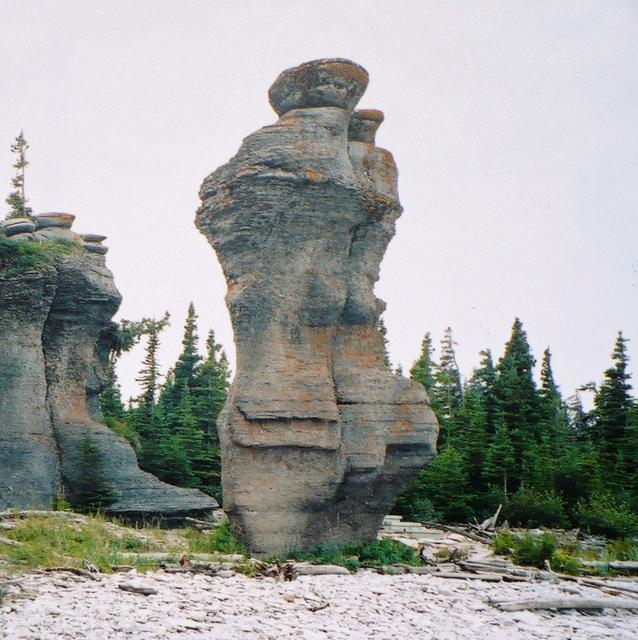Mingan National Park Reserve is a national park reserve on the North Shore of Quebec, Canada.
The Mingan Archipelago National Park Reserve of Canada is comprised of roughly 1,000 islands and coastal inlets scattered between the mouth of the Saint-Jean River (near Longue-Pointe-de-Mingan) to the west, and the Aguanus River (near Aguanish), to the east. The archipelago has a surface area of about 90 km², while the reserve has an area of 151 km² (58 sq mi). It was established in 1984.
- Park Information and/or reservation, +1 418-538-3285, +1 418-949-2126.

The islands formed as the continent slowly rose after the last glaciation. Over the course of the last few thousand years, the limestone rocks were slowly eroded by the waves, the changing sea level and the winds, as well as seasonal freezing and thawing. The result is a unique set of limestone sculptures, which form the largest group of such monoliths in Canada.
Animals that inhabit this national park are beavers, river otters, muskrats, silver foxes, red squirrels, snowshoe hares, red foxes, ermines, certain species of bats and a number of small rodents. Occasionally, black bears and moose can be found on certain islands near the coast. Birds found on the islands include warblers, buntings, bald eagles, ospreys, passerines, eiders, terns, puffins, razorbills, and shorebirds. Marine animals that inhabit offshore are grey seals, minke whales, dolphins, harbour seals, humpback whales, porpoises, fin whales, and harp seals.
Park Information and/or reservation, +1 418-538-3285, +1 418-949-2126.
Daily admission (2018):
- Adult $5.80
- Senior $4.90
- Youth and children free
- Family/group $11.75
Seasonal admission/before June 30:
- Adult $29.40/$14.70
- Senior $24.50/$12.20
- Youth and children free
- Family/group/$58.90/$36.80
- Limestone monoliths: The islands formed as the continent slowly rose after the last glaciation. Over the course of the last few thousand years, the limestone rocks were slowly eroded by the waves, the changing sea level and the winds, as well as seasonal freezing and thawing. The result is a unique set of limestone sculptures, which form the largest group of such monoliths in Canada.
Limestone monoliths: The islands formed as the continent slowly rose after the last glaciation. Over the course of the last few thousand years, the limestone rocks were slowly eroded by the waves, the changing sea level and the winds, as well as seasonal freezing and thawing. The result is a unique set of limestone sculptures, which form the largest group of such monoliths in Canada.
- Excursions with Services Maritimes Boréale, Pélagie Portal Cormier, 1010 Anciens Walk, Havre-Saint-Pierre, +1 418-538-2865. 3- to 4-hour tours and day-long cruises offered June to September to see sea birds, monoliths and islands.
Excursions with Services Maritimes Boréale, Pélagie Portal Cormier, 1010 Anciens Walk, Havre-Saint-Pierre, +1 418-538-2865. 3- to 4-hour tours and day-long cruises offered June to September to see sea birds, monoliths and islands.
There are no services on the islands. See Havre-Saint-Pierre>|Havre-Saint-Pierre>]]
